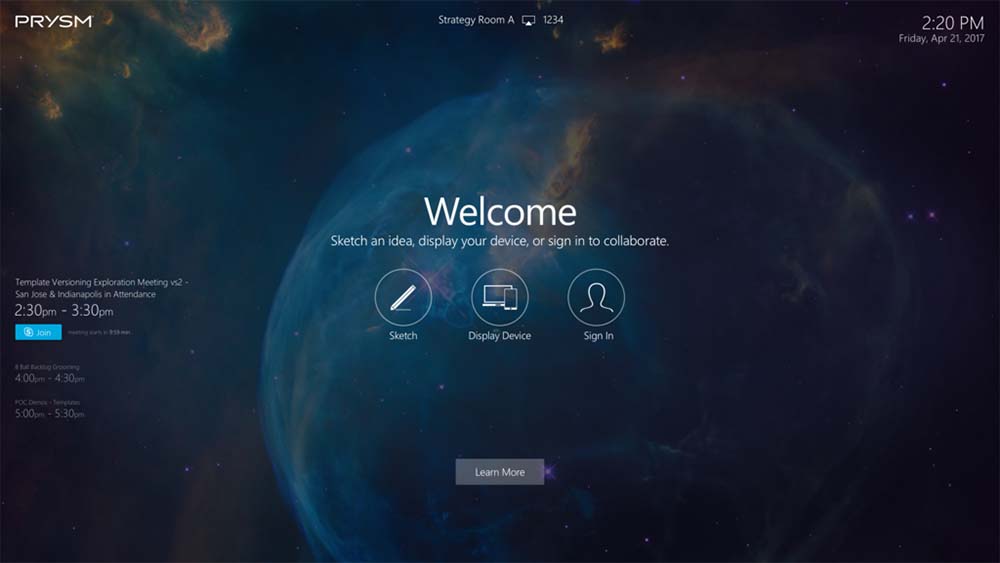Prysm, provider of digital meeting room solutions, is launching what it has referred to as the “New Prysm”: two native applications—for Windows 10 desktops and for iPhones—designed to extend the company’s digital workplace platform to allow remote collaboration.
“Now people have a complete workflow that they can go throughout a project of individual work, to teamwork, back to individual work as many times and as seamlessly as they need to,” said David Schweer, Prysm’s director of product marketing. “It really represents a big shift in our software from being tied to the meeting room to being available wherever you are, anyplace in the world, on roughly any device.”

Built around the company’s core idea of increasing user engagement through quick, easy access to content, the new native applications aim to deliver the same experience to which Prysm users have grown accustomed, with added flexibility to tailor access to each individual’s style or place of work.
At its release, expected by the end of Q4 2017, the platform will be available on Microsoft Windows 10 devices—including laptops, Surface devices, and the Surface Hub via UWP—as well as the Apple iPhone, but the company will work to expand this with applications for Mac OS and Android mobile devices in 2018.
“Prysm always vendor agnostic, and this is a continuation of that,” Schweer said. “One of the things that we hear time and time again is that people don’t want to be in a vendor-lock situation, but they want a solution that will tie together their existing technology ecosystem, so that’s what we’re doing here.”
In addition, the company has announced plans to unify its platform with collaboration tools from Cisco and Polycom, as well as the artificial intelligence power of IBM Watson. These enhancements are expected to emerge in 2018.
“We’re trying to unify the experience from the meeting room to the desktop and try to do that in the most easy-to-use fashion,” Schweer said. “So we’re very excited about what this represents for Prysm, but we’re also hearing this from our system integrators. We are still a partner-first company; we’d like to work with them to bring this to their users as well.”











